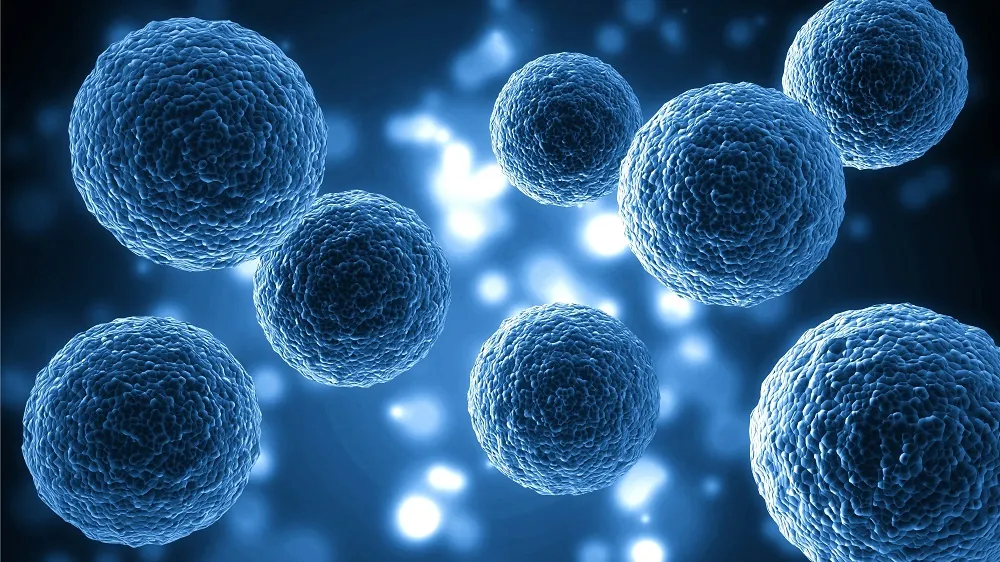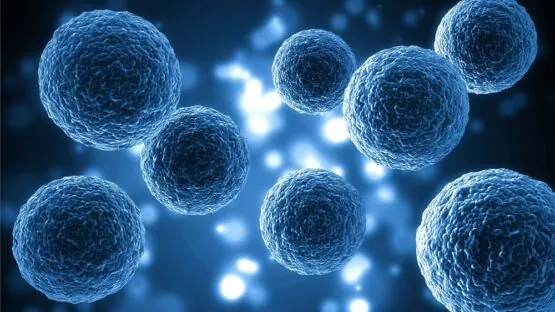Researchers have found that growing older cells in a youthful medium causes them to behave and function more like younger cells, suggesting a new method of creating stem cell-based therapies.
Cultivating patient-derived cells
For some time, mesenchymal stem cells (MSCs), which can be used to differentiate into multiple functional cell types, were thought to be immune privileged in that foreign (allogeneic) MSCs would not be attacked by the host’s immune system. Later experiments, however, found this to be false [1] and that their contributions were more likely to be due to their beneficial signaling effects [2], as the cells themselves were short-lived against a hostile immune system.
Ideally, cells would come from patients themselves, obviating the risks and concerns of allogeneic cells. However, cells taken from older patients are themselves affected by aging, and restoring these cells’ youthful abilities is its own challenge.
The researchers had previously done similar cellular experiments in a decellularized extracellular matrix (ECM), which boosted these older cells’ proliferation abilities [3]. This time, however, they cultivated one group of adipose-derived MSCs (AD-MSCs), derived from volunteers over the age of 65, in ECM Plus, a medium that is created by stem cells found in human amniotic fluid [4]. This cultivation medium contains various collagens, glycoproteins, and basement proteins that are part of the stem cell niche.
As youthful controls, the researchers used Wharton’s Jelly (WJ) cells, which are derived from part of the umbilical cord. They noted that younger AD-MSCs may have been preferable, but these cells’ performance varies greatly due to such factors as fat mass, sex, from where in the body they are derived, and even how they are prepared [5]. They also used tissue culture plastic (TCP) as a medium for an aged control group, as they found it impossible to create an artificial ECM based on aged tissue that could serve as a counterpart of ECM Plus.
Multiple improvements in cellular function
The difference in cultivation medium yielded strong results. Compared to the TCP group, aged AD-MSCs cultured on ECM Plus had fewer markers of cellular senescence, an increased marker of early-stage stemness, longer telomeres, reduced signs of oxidative stress, and less death by apoptosis within the first five passages.
Proliferation was also increased. The ECM Plus group generated more colony-forming units, and the colonies that were formed were more able to differentiate into other cellular types. This improvement was independent of cell type; given the proper stimuli, MSCs cultivated in ECM Plus differentiated into more cartilage-forming cells (chondrocytes), neural progenitor cells, fat cells (adipocytes), and bone-forming cells (osteoblasts). The researchers found that cultivation in this medium caused osteoblasts generated from AD-MSCs or WJ cells to generate substantially more bone, and these cells were much less likely to become adipocytes instead.
The researchers also tested how well these cells respond to an inflammatory environment. Cells generated on ECM Plus created far more anti-inflammatory factors when exposed to the well-known inflammation inducer TNF-α.
“Taken together, these results demonstrate that maintenance of AD-MSCs on ECM Plus remarkably restores the ability of the cells to self-renew, undergo differentiation into multiple cell lineages, including osteogenesis, in vivo, and produce trophic factors.”
Better mitochondria and gene expression
In another experiment using different sets of cells, the researchers took a closer look at oxidative stress and overall mitochondrial function. They found that, in this area, the AD-MSCs cultivated on ECM Plus were more like WJs than the AD-MSCs cultivated on TCP were. The ECM Plus group had less proton leakage and more youthful respiration overall, including an increase in efficiency. A supercomplex responsible for electron transport was more effective in the ECM Plus group.
The benefits were also found in gene expression. Unsurprisingly, cells cultivated in ECM Plus had significantly different gene expression relating to ECM interactions than the TCP group, and the reduced senescence was seen in this area as well. Cellular proliferation, a reduction in the senescence-associated secretory phenotype (SASP), reduced apoptosis, and differentiation potential, including differentiation into multiple lineages, were also found to be positively impacted in the realm of gene expression. Additionally, cells cultured on ECM Plus were more likely to express HLA-DR, a compound that encourages the proliferation of T cells.
While these are still aged cells, these findings suggest that a proper growth medium may be the key to effectively using patient-derived (autologous) treatments rather than potentially hazardous and short-lived allogeneic cells. If one’s own stem cells can be refined, cultivated, and properly differentiated, they can serve as treatment vectors for multiple age-related diseases. However, this was entirely a cellular study and there were no animals involved; future in vivo work will have to be conducted to determine the true abilities of cells cultivated in this way.
Literature
[1] Ankrum, J. A., Ong, J. F., & Karp, J. M. (2014). Mesenchymal stem cells: immune evasive, not immune privileged. Nature biotechnology, 32(3), 252-260.
[2] Munoz, J. R., Stoutenger, B. R., Robinson, A. P., Spees, J. L., & Prockop, D. J. (2005). Human stem/progenitor cells from bone marrow promote neurogenesis of endogenous neural stem cells in the hippocampus of mice. Proceedings of the National Academy of Sciences, 102(50), 18171-18176.
[3] Block, T. J., Marinkovic, M., Tran, O. N., Gonzalez, A. O., Marshall, A., Dean, D. D., & Chen, X. D. (2017). Restoring the quantity and quality of elderly human mesenchymal stem cells for autologous cell-based therapies. Stem Cell Research & Therapy, 8(1), 239.
[4] Block, T., Creech, J., da Rocha, A. M., Marinkovic, M., Ponce-Balbuena, D., Jiménez-Vázquez, E. N., … & Herron, T. J. (2020). Human perinatal stem cell derived extracellular matrix enables rapid maturation of hiPSC-CM structural and functional phenotypes. Scientific reports, 10(1), 19071.
[5] Tsekouras, A., Mantas, D., Tsilimigras, D. I., Moris, D., Kontos, M., & Zografos, G. C. (2017). Comparison of the viability and yield of adipose-derived stem cells (ASCs) from different donor areas. In vivo, 31(6), 1229-1234.


